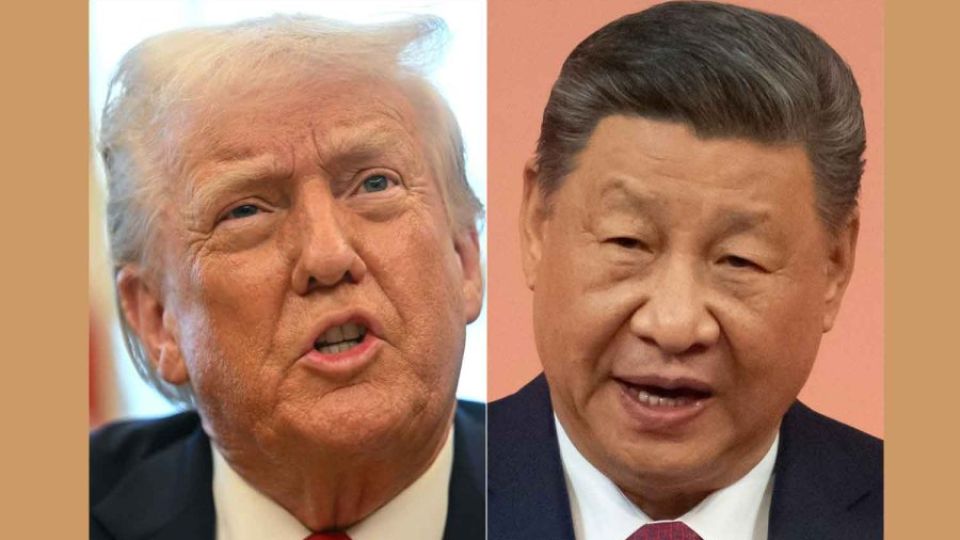February 5, 2025
SHENZHEN/BEIJING – Minutes after US President Donald Trump’s sweeping tariff hikes on Chinese goods kicked in on Feb 4, Beijing fired off a series of retaliatory salvos of its own: a carefully crafted basket of measures that signals China’s resolve yet leaves space for dialogue.
Unlike the US, whose tax hikes of 10 per cent span all Chinese goods, Beijing’s moves target specific American exports and companies that do business in China. They also tighten access to Chinese exports of critical minerals.
“The response is well-calibrated,” said Mr Stephen Olson, a former US trade negotiator.
“Strong enough to get Trump’s attention without being so damaging that it torpedoes the ability of the two countries to strike some type of deal,” the visiting senior fellow with the ISEAS – Yusof Ishak Institute told The Straits Times.
China announced tariffs of 15 per cent on American coal and liquefied natural gas (LNG), and 10 per cent tax hikes on crude oil, farm machinery, pickup trucks and other goods. These are to take effect on Feb 10.
Beijing’s countermeasures will not deal too heavy a blow to the US for now, analysts noted.
“Chinese imports of American fossil fuels, gas-guzzling cars and farm equipment are insignificant,” Ms Erica Tay, Maybank’s director of macro research, told ST.
Still, China’s targeting of the energy sector would not go unnoticed by the US President, others added.
Mr Olson said: “Trump envisions the US as an energy powerhouse, and these are all important export sectors.”
China reserved its highest tariffs for LNG – of which the US is the world’s largest exporter – as well as coal.
Apart from tariffs, China also imposed export controls on critical minerals – of which it is a key producer or processor – many of which are used to produce high-tech goods. Its announcement on Feb 4, effective the same day, did not explicitly mention the US.
In addition, it placed two US companies that do business in China on an “unreliable entity” list. The first, PVH, which owns brands such as Calvin Klein and Tommy Hilfiger, has been under investigation since September 2024 for allegedly boycotting cotton from China’s Xinjiang region. The second is biotechnology firm Illumina, which has offices in China and manufactures testing reagents in Shanghai.
China also announced that it would launch an anti-monopoly investigation into Google. The company’s products, such as its search engine, are blocked in China, but it has offices in the country.
Investigations into Google would not dent its business since these are “just investigations”, and given its minimal presence in China, Maybank’s Ms Tay said.
But the company, alongside PVH and Illumina, adds to “a list of corporates who can lobby Washington to negotiate with Beijing”, she added.
Professor Wu Xinbo, dean of the Institute of International Studies at Shanghai’s Fudan University, said that with these “firm countermeasures”, Beijing’s message was clear.
“China does not accept the US’ ‘blast’ or pressure tactics,” he told ST.
China’s actions were intended not to escalate confrontation, he added, but to make the US understand that “issues between the two countries should be addressed through dialogue and consultations, rather than through unreasonable pressure or unilateral coercion”.
Although China has not gone in with guns blazing in its response to the US, it has also not immediately offered up concessions.
The leaders of Canada and Mexico – which were originally slated to face tariffs of 25 per cent from the US effective from Feb 4 – negotiated a 30-day reprieve in return for concessions on border and crime enforcement via phone calls with Mr Trump. This came after both countries earlier announced that they would retaliate against the US tariffs.
No such call took place between Chinese President Xi Jinping and Mr Trump before the tax hikes kicked in, but the White House has signalled that one is forthcoming.
It indicated on Feb 3 that Mr Trump could speak to Mr Xi on the phone in “the next couple of days”. They last spoke on Jan 17, before Mr Trump took office.
China, which concludes an eight-day Chinese New Year holiday on Feb 4, has not commented on a possible phone call.
Mr Olson, the former US trade negotiator, sees China’s response as a “shot across the bow” that was likely intended at giving Mr Xi more leverage in talks with Mr Trump.
Some analysts see the US’ tariffs and China’s retaliation as opening salvos in what could turn into a larger trade war.
Mr Trump described his own actions as such on Feb 3, adding that unless China further stems the flow of fentanyl – the leading cause of drug overdoses in the US – the “tariffs are going to go substantially higher”.
In response, China has said fentanyl is America’s problem, and that it would challenge the tariffs by bringing a case to the World Trade Organisation (WTO). It announced on Feb 4 that it had filed a lawsuit with the global body.
The move “will have no real impact”, said law professor Henry Gao of the Singapore Management University, who is an expert on the global body.
This is because the US has hamstrung the WTO’s ability since 2019 to render decisions on trade disputes enforceable by blocking the appointment of new judges to its appellate body.
Assistant Professor Dylan Loh, a Chinese foreign policy expert at Nanyang Technological University, said: “There is certainly more (that China) could do, but they would not want to show all their cards now.”
China’s current response “allows both countries to have an off-ramp and to keep the tariffs imposed on each other manageable”, he added.
For now, observers are closely watching how negotiations between the world’s two largest economies will play out.
Of China’s response, Maybank’s Ms Tay said: “The message is clear: let’s talk.”


